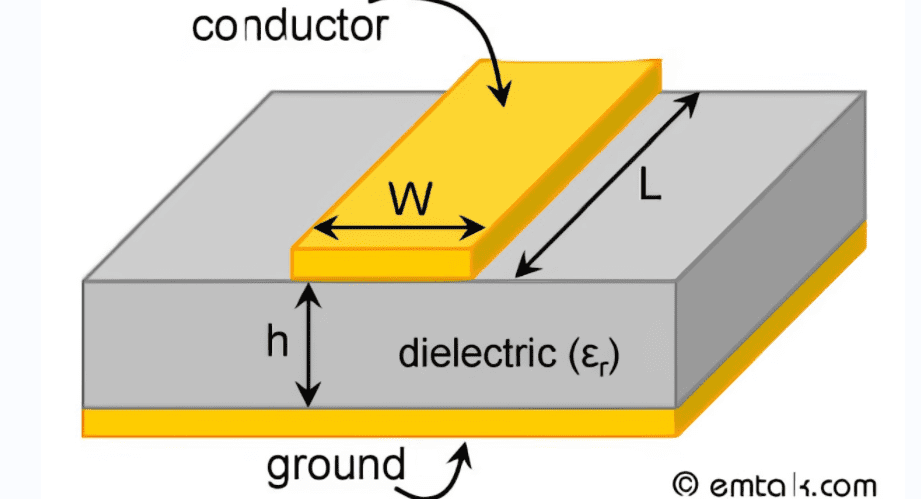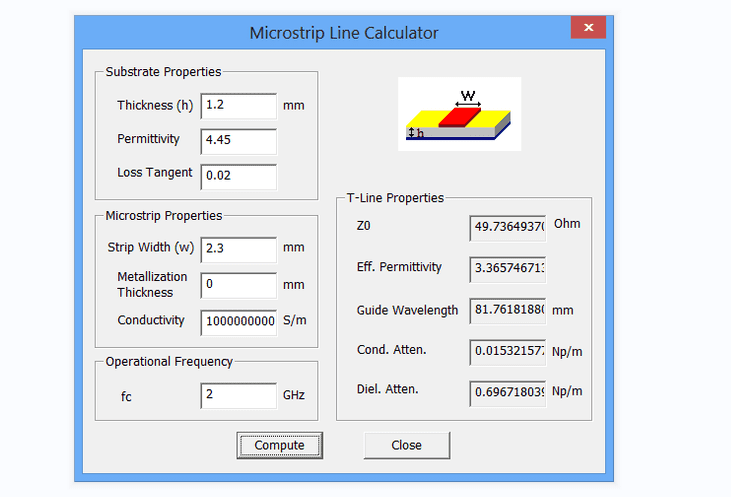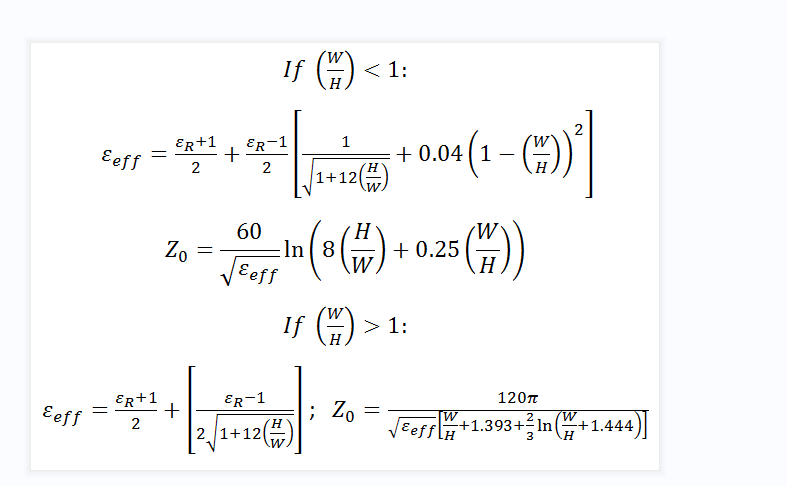A microstrip line calculator is not an ordinary calculator. When it comes To PCB designing and manufacturing, then you have to consider many things. Characteristics impedance is one of them.
It is very useful in PCB manufacturing. It helps in determining the width and length of the microstrip transmission line. If you know the width and length, then you can calculate the characteristic impedance.
Types of transmission lines
Printed circuit boards use two transmission lines. One is a microstrip transmission line, while the other one is a stripline. Both transmission lines consist of a signal trace and reference plane. Both have their unique electromagnetic distribution. The main difference between microstrip transmission and stripline is their location in the PCB.

That’s why Microstrip is on the surface layer of the PCB, while the stripline is a sandwich between two reference planes. The PCB material, wavelength, and characteristic impedance can change the electromagnetic distribution of the microstrip transmission line. As a result, it transmits RF signals. The microstrip transmission line is lighter and more compact than traditional waveguide technology. As a result, it doesn’t cost too much.
The microstrip transmission line is always routed above a large reference plane on the adjacent layer. That’s why microstrip transmission lines are good for transferring power from one point to another. Similarly, these microstrip transmission lines are useful for dividing or combining power signals and generating phase shifts.
Structure of micro microstrip transmission line
A microstrip transmission line is made up of a flat conductor. Copper is a suitable material for flat conductors. There is a ground plane wider than the microstrip transmission line. It is separated by a dielectric. It has specific width and thickness. The dielectric material serves as a substrate, and it is sandwiched between the microstrip transmission line and the ground plane.
How to calculate characteristic impedance by using a microstrip line impedance calculator?
Many online Microstrip line calculators are available and serve the purpose best. The microstrip calculator determines the width and length of a microstrip line. It also helps to know characteristic impedance. Characteristic impedance is crucial to know how efficiently power transmission is occurring.
If output characteristic impedance has an output value than input impedance, then there is limited current flow.

This microstrip line calculator can calculate any characteristic impedance. You have to provide the necessary data, such as elevation and dielectric constant, to the microstrip line calculator.
This microstrip line calculator gives you good data to start estimating printed circuit board dielectric thickness. That’s why it is important for us to use the right microstrip line calculator to get an accurate value. This will help you later to choose the best laminate materials according to impedance and trace thickness.
Add values
Enter values in the microstrip line calculator for characteristic impedance. In this way, you can determine the physical width and length of the Microstrip line. Online microstrip line calculator has different options like synthesis or results. Select any one of them according to availability.
Synthesize and analyze results
Press Synthesize to see the results. After that, you can analyze the results. The ideal characteristic impedance usually ranges between fifty to fifty-five ohms. But results can vary, and you can make necessary changes in trace width according to results.
Factors affecting impedance
The following factors can affect the results.
Effect of trace thickness on calculations
A microstrip line with limited thickness tends to have increased capacitances, affecting characteristics impedance calculations. So trace thickness matters a lot.
Effect of dielectric height
Dielectric height raises the capacitance per length and therefore lowers the value impedance. Its means height and width matter a lot while calculating impedance. The effective relative dielectric constant of a microstrip line is calculated by the formula.
The effective relative permittivity also depends on the width and thickness of the microstrip transmission line. A microstrip line has a characteristic impedance of fifty ohms. It also has effective permittivity derived from the measurement of phase velocity.
Things to keep in mind while using Microstrip line Calculators
Undoubtedly microstrip calculator is very useful. They help you calculate the right values for the microstrip line. However, online Microstrip line calculators ignore some important information. In simple words, you can say that it provides a rough value. They can’t do complex formulations. They can’t provide you with in-depth results.

Tangent losses
These calculators mostly ignore the losses. They just consider the loss tangent but not every calculator considers it. Copper foil roughness and trace width affect signal propagation and impedance. So you must adjust the impedance according to your requirement by keeping the losses in mind. You can’t rely on these online calculators completely.
Effects of the solder masking process
The solder masking process affects the functionality of the PCB. Solder masks also contribute to line losses. As a result, it affects the characteristic impedance calculations. If you want to calculate it, then it leads toward a complex formula. That’s why microstrip line calculators ignore it. But in real life, these losses create a difference while calculating characteristic impedance.
Effects of Etching on characteristic impedance
Etching also affects the trace to have different characteristic impedance. Most online calculators don’t consider it.
Propagation delay
The propagation delay value for a PCB transmission line will always contain some loss; online impedance calculators ignore it.

Still, Microstrip lines are part of many RF designs or printed circuit boards. Characteristics impedance must be calculated first in designing a stripline or Microstrip. Trace width plays an important role in calculations.
Wrapping up the things
Microstrip line impedance calculators are useful to some extent, but they have some of their downsides, so it is very necessary to use some up-to-date modern tools for calculations. Nowadays, devices are more complex and delicate, so more appropriate calculations can increase the functionality of PCBs and devices. For basic work, you can use Microstrip line impedance calculators. If you want to save yourself from all the hassle of calculations, then you can take services from Swimbi PCB manufacture. They provide you One-Stop Solution for PCB RF design and Prototype assembly. Thousands of satisfied customers are their permanent clients.
Comments are closed